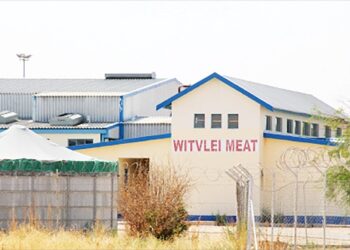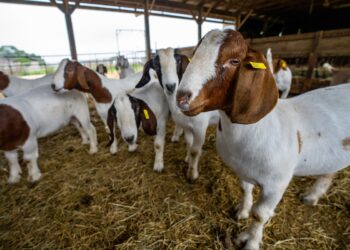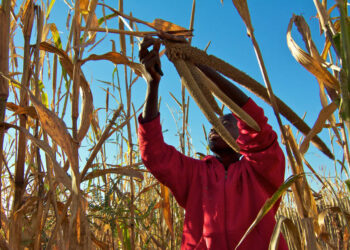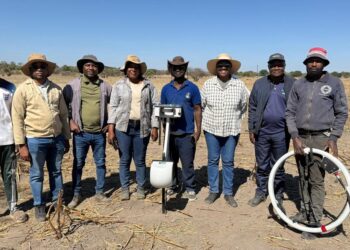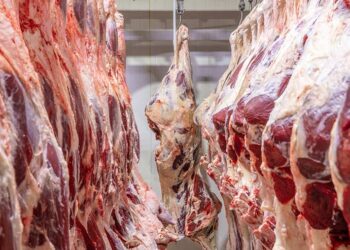
Namibia’s beef industry has seen significant growth in 2024, with exports reaching 17,635,903 kilograms by the end of the third quarter, according to official data.
According to recent statistics by the Livestock and Livestock Products Board of Namibia (LLPBN), this reflects a 66.2% increase from the same period in 2023, largely driven by strong demand in the European Union (EU) and sustained contributions from other key markets.
“On the meat trading front, beef exports totalled 6,667,811kg during the first two months of the third quarter, growing by 60.8% and brings year-to-date (YTD) total beef exports to various destinations at 17,635,903kg which is 66.2% higher than the 2023 level,†a release by the board says.
The Board reported that the EU, which absorbed 50.2% of Namibia’s total beef exports, remains the primary destination, followed by South Africa at 22.7%, the United Kingdom at 16.4%, and Norway at 8.3%.
“On the other hand, YTD beef imports primarily in the form of processed and offal products are down by 0.6% pointing to marginal reduction in availability of locally produced offal,†the report read.
Export growth has been bolstered by increased throughput at export-approved abattoirs.
Facilities such as the Rundu abattoir, which slaughtered 1,017 animals, and Katima Mulilo abattoir, which processed 957 animals, significantly contributed to this uptick.
“Regrettably, the demand for local weaners by South African feedlots and farmers declined during the quarter. This led to a subsequent decline in the number of animals exported on hoof, recording a total of 47,714 heads exported which is 7.7% lower than the 51,690 heads exported during the third quarter of 2023,†the report reads.
Despite the success in beef exports, the broader livestock industry saw mixed results.
Marketing of cattle increased by a modest 1.5%, with 99,451 heads marketed compared to 98,016 in the same period last year.
This marginal increase came as livestock prices faced downward pressure; Namibian producer prices lagged behind those of major beef-exporting countries such as the USA, EU, Argentina, and Uruguay.
“Weaner prices are, however, expected to start improving as feedlots have commenced stocking for the festive season. Year-on-year, the B2 producer carcass price dropped by N$1.11/kg and averaged N$60.54/kg during the third quarter of 2024, relative to the N$61.65/kg paid to producers during the same period in 2023,†the release read.
Meanwhile, lamb and mutton exports faced challenges, with a 25.5% decline YTD.
A total of 632,045kg of lamb and mutton was exported, down from 844,725kg in 2023.
South Africa remains the largest importer, taking in 85.9% of these exports, while Botswana and Zambia accounted for 10.9% and 3.2%, respectively.
Slaughtering activities also declined across Namibian abattoirs, with A-class abattoirs down 16.8% and B & C-class abattoirs down 15.1%.
The report further states that the sheep sector saw a 6.7% drop in marketed volumes, with live exports decreasing by 4.1% to 144,045 animals, down from 150,175 in Q3 2023.
Namibian A2 sheep prices averaged N$76.28/kg, significantly lower than the Northern Cape’s benchmark price of N$83.67/kg.
Meanwhile, the goat sector also contracted, with marketed numbers declining by 2.9% to 45,860 heads, although the producer lamb auction price increased to N$34.19/kg from N$28.63/kg the previous year.
“The contraction is owed to a fall in live exports and slaughtering at local abattoirs,†it read.
The pork sector, in contrast, demonstrated positive growth. Marketed pig numbers increased by 12.5%, reaching 12,434 heads at LLPBN-approved abattoirs compared to 11,053 in Q3 2023.
Domestic pork production, which meets 40% of demand, was supplemented by imports, which made up the remaining 60%.
“Of the imported pork, 46.3% originated from Germany, followed by South Africa and Spain with a market share of 21.7% each, respectively. The remaining 10.4% originated from other EU member states and China,†the release stated.


